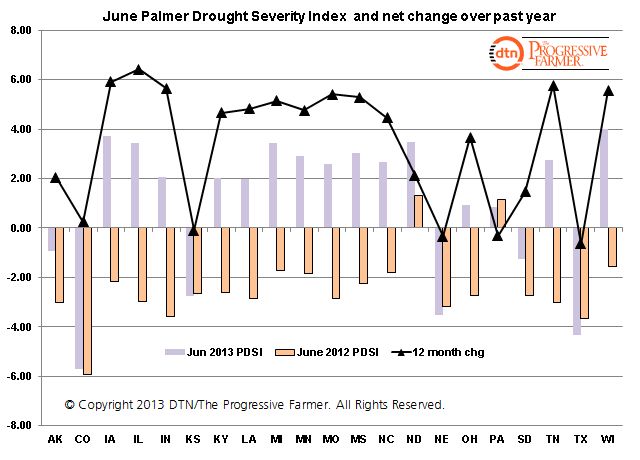Fundamentally Speaking
Improved Palmer Drought Index
Though the grain and oilseed markets are registering some concern about the growing dry regions in areas of the Western Corn Belt, the situation is far different from a year ago when severe drought ravaged the nation’s crops.
Ample spring rains and much more reasonable temperatures than a year ago limiting trans-evaporation rates have resulted in far better groundwater reserves than a year ago.
P[L1] D[0x0] M[300x250] OOP[F] ADUNIT[] T[]
This graphic tracks the end of June Palmer Drought Severity Index (PDSI) readings for 2012 and 2013 along with the net change between the two years.
Last year at the end of June all but two of the top 21 corn and soybean growing states, ND and PA had PDSI readings below zero with 14 with levels below 2.00 indicating moderate or worse drought .
This year only six states have end of June 2013 PDSI readings below zero with just CO, KS, NE and TX having moderate or worse drought conditions.
Note that these represent three of the four states that have been PDSI ratings decrease over the past year.
Note that NE, CO, KS, and TX are the states that are still in various stages of drought as much of the central and eastern corn and soybean growing states have seen a dramatic improvement in subsoil moisture conditions over the past year as reflected in the latest U.S. Drought Monitor map.
(KA)
© Copyright 2013 DTN/The Progressive Farmer. All rights reserved.






Comments
To comment, please Log In or Join our Community .